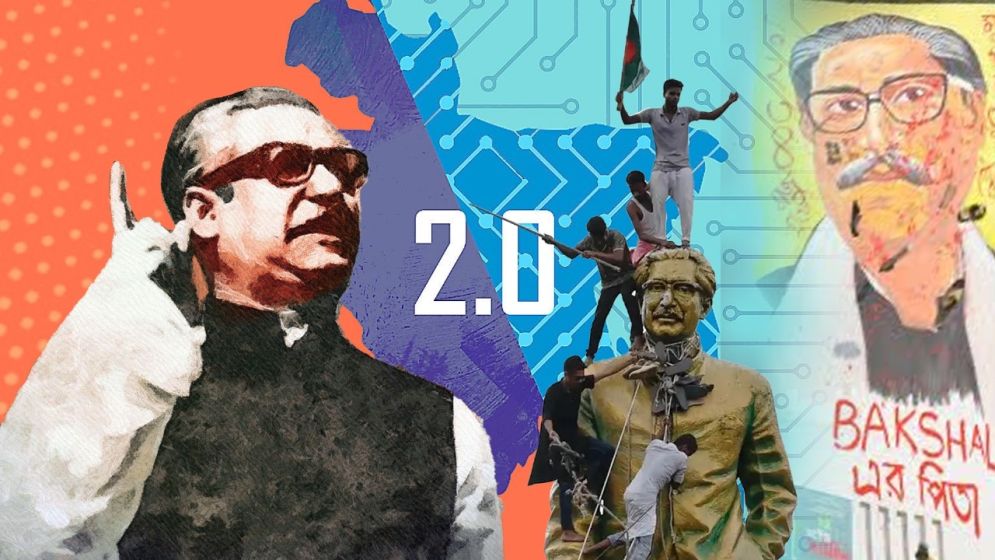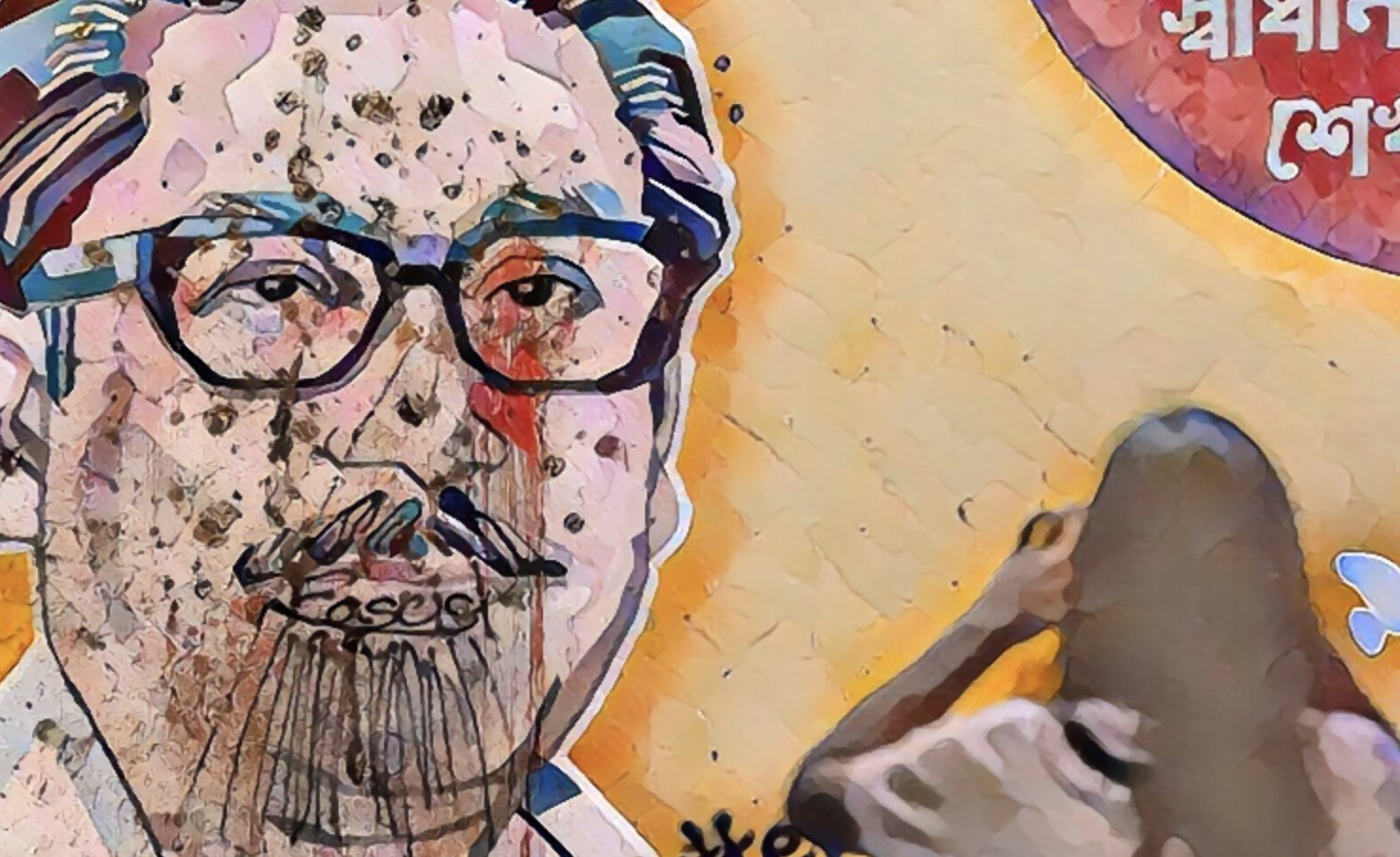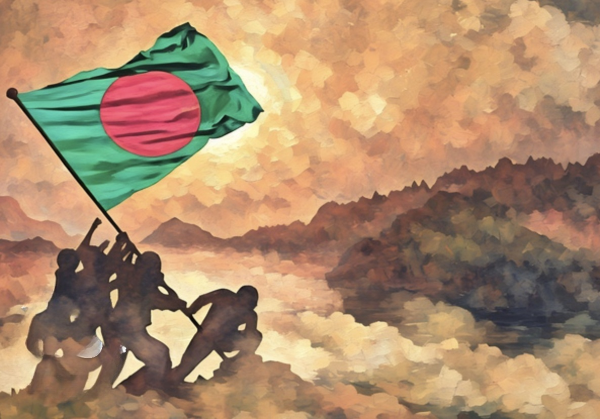What will be the legacy of Sheikh Mujib in Bangladesh 2.0?

Sheikh Mujibur Rahman occupies a paradoxical place in Bangladesh’s history. To many, he was the towering figure of independence, the voice who gave a fragmented people the courage to dream of a sovereign nation.
But to others, the man who inspired liberation became the architect of disillusion.
After independence, Mujib presided over a government riddled with corruption, nepotism, repression of opposition and intolerance of dissent. His one-party experiment, BAKSAL, dismantled fragile democratic institutions in favor of authoritarian rule.
What was sold as a vision for unity soon revealed itself as a failed political experiment, leaving behind a crippled economy and a trail of extrajudicial killings.
Mujib’s trajectory as a ruler began at the zenith of public adoration but quickly unraveled. His decline, however, was not driven by popular revolt; it ended in bullets fired by his own military.
The brutality of his assassination,including the killing of women and children, transformed him in death into something he had not been in life: a tragic martyr. History was rewritten to sanctify him, rather than to interrogate his failures.
Over the decades, popular culture and politics collaborated in polishing this myth. At first, the process was gradual, driven by partisanship and loyalists. But once the Awami League returned to power, it was elevated into state policy.
The task of rebuilding Mujib’s image became a national project, enforced through schools, state institutions, bureaucracy and media.
Sheikh Hasina, his daughter, made this political deification the hallmark of her long rule.
From 2008 until her downfall in the July uprising of 2024, her government pursued the “Sheikh Mujib Rebuilding Project” with near-religious fervor. Criticism of Mujib or his family became indistinguishable from heresy, policed by the Digital Security Act.
Writers, academicians, journalists, and even children were prosecuted. Universities and government offices were conscripted into the ritual of Mujib worship. His centenary was more of an orchestrated mass liturgy than a commemoration.
It was complete sanctification. Mujib was remade into what scholars have called a “political deity”--a mortal leader recast as a figure of superhuman virtue and unquestionable authority.
In India and Sri Lanka, the phenomenon has been studied by academics like Moumita Sen and Kenneth Nielson. In Bangladesh, it was a lived experience.

Formation of a
cult-worship
The danger of political deities is that they silence the living in service of the dead. Bangladesh needed a statesman who could be remembered with honesty, not worshipped with fear. Instead, it inherited a cult.
Professor Arild Ruud has argued that Bangladesh undertook the construction of a “civil religion” around Sheikh Mujibur Rahman, an enterprise that blurred the boundary between man and nation.
Mujib was no longer merely a political leader; he was recast as the sovereign embodiment of Bangladesh itself, demanding unqualified loyalty from its citizens. In this telling, to oppose Mujib was not to dissent from politics, but to betray the nation.
The obvious question is how such a project could thrive in a Muslim-majority country where open deification, as practiced in parts of India, would have been unthinkable.
The answer lies in what might be called “covert deification.” Mujib was never explicitly elevated to ‘godhood’, but the mechanics of deification–the rituals, the symbols, the compulsory reverence–were all present.
His name became untouchable, his image beyond critique. In Hasina’s final years, this implicit sanctification was enforced by law and fear.
The process was deliberate. Mujib’s March 7th speech was re-scripted as scripture. The claim that “Bangladesh would not exist without Mujib” was repeated until it hardened into dogma.
His glasses, his pipe, even the tilt of his index finger were transformed into icons, reproduced in literature, art, cinema, and daily life. Banknotes bore his face. Billboards displayed his words. Newspapers, textbooks, television programs, and official speeches echoed his name.
The state ensured his omnipresence, rendering him an “invisible force” that permeated both public institutions and private imagination.
This was a saturation rather than a commemoration. Mujib’s figure grew into a banyan tree under which all other leaders shrank into bonsais.
The architects of Bangladesh’s independence–Ziaur Rahman, who first declared independence and fought on the battlefield; Tajuddin Ahmad and Syed Nazrul Islam, who organized the provisional government in exile–were reduced to footnotes.
Their contributions were inconvenient to the narrative of Mujib as the sole author of the nation.

Reimagination after the saturation
point
The result was twofold. On the one hand, Mujib was elevated into a flawless, sovereign symbol whose legacy could not be questioned. On the other, the genuinely popular character of the 1971 Liberation War was diminished.
Benedict Anderson famously described nations as “imagined communities,” built from shared memories, values, and struggles. Bangladesh’s independence was precisely that–a collective endeavor, born of many sacrifices.
By collapsing that collective into the persona of one man, the state replaced history with mythology. What emerged was not the honest memory of a liberation struggle, but the enforced worship of a political deity.
The July uprising cracked open a long-sealed debate: the deification of Sheikh Mujibur Rahman and the erasure of the people’s collective role in the Liberation War. For the first time in decades, the public glimpsed the possibility of reclaiming history from myth.
But that opening is already being squandered.
Accusations of corruption among student leaders, the familiar jockeying of political parties masquerading as defenders of democracy, and the emboldening of the far right are suffocating this moment. What could have been a reckoning with truth is instead dissolving into chaos.
The uprising’s greatest strength was cultural. It hinted at an alternative narrative of Bangladesh–one that resisted the suffocating cult of Mujib and restored the Liberation War to its rightful place as a popular struggle.
But that momentum is now being hijacked. Far-right extremists are filling the vacuum with mob politics: storming shrines, harassing women, silencing dissenters. In the process, they are not only poisoning the chance for a new civic nationalism but also giving fresh life to the forces defeated in 1971.
The defeated of the Liberation War and the defeated of the July uprising are, perversely, now legitimizing each other’s existence.
The lesson is clear: you cannot dismantle the political deification of Mujib with violence or vengeance. Breaking the myth requires something deeper–the rebuilding of a cultural and political landscape that honors the plurality of Bangladesh’s founding.
It requires naming all the architects of the state, not just one. Above all, it requires restoring the Liberation War as a people’s war, not the creation myth of a single man.
If the July uprising is remembered as a continuation of 1971’s unfinished promise, it could yet revive a genuine national imagination–one where citizens reclaim their history, and with it, their future.
—
Saimum Parvez is a senior researcher at the School of Theology and Religion in Norway. He is the editor-in-chief of Bangla Outlook
The article was first published in Bangla at Prothom Alo

